Today Current Affairs: 11th May 2022 for UPSC IAS exams, State PSC exams, SSC CGL, State SSC, RRB, Railways, Banking Exam & IBPS, etc
Table of Contents
MPLAD Scheme:
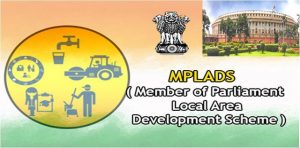
At a time when MPs have been asking for an increase in the MP Local Area Development Scheme (MPLADS) fund, the Union Finance Ministry has ordered revised rules, under which the interest that the fund accrues will be deposited in the Consolidated Fund of India.
- The order of the Ministry dated April 11 was conveyed to the Rajya Sabha and the Lok Sabha only by the last week of April.
- Each MP is allocated ₹5 crore annually under the scheme.
- The MPLADS fund is released to the district authority and the MPs only have power to recommend development work.
- The payment is also released by the designated district authority on completion of the work.
- So far, the interest accrued on the fund used to be added to the MPLADS account and could be used for the development projects.
- Opposition parties criticized the changed guidelines, arguing that the new order was in violation of the MPLADS guidelines of 2016.
PM-WANI:

The “Prime Minister Wi-Fi Access Network Interface (PM-WANI)” scheme has been recently launched by RailTel.
- Through this scheme access to RailTel’s free and fast public WiFi services will be provided in 100 Indian Railways stations across the country having 2,384 WiFi hotspots.
- PM-WANI is the Department of Telecom’s program that helps facilitate the use and proliferates broadband usage across the country.
- The framework of the PM-WANI has been developed and designed by the Centre for Development of Telematics (C-DOT).
- Through the PM-WANI last-mile internet access is being provided across the country.
- The 100 railway stations are spread across 22 states of the nation and include:
- 71 Category A1 railway stations
- 29 railway stations that are of other categories.
- The chairman and managing director of RailTel Puneet Chawla launched this WiFi access scheme.
- An individual can access the WiFi network via an android based mobile app named ‘Wi-DOT’which is available on the Google Play Store.
Pulitzer Prize 2022:
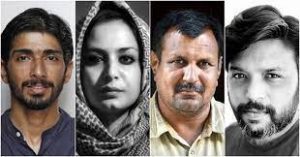
A team of four Indian photographers from Reuters news agency — slain photojournalist Danish Siddiqui, Adnan Abidi, Sanna Irshad Mattoo and Amit Dave — have won the 2022 Pulitzer Prize for feature photography for their coverage of the Covid-19 crisis in India.
- Arguably the most coveted award for journalists from across the world, the Pulitzer is announced by America’s Columbia University and bestowed on the recommendation of the Pulitzer Prize Board.
- The Pulitzer Prize is an award for achievements in newspaper, magazine, online journalism, literature and musical composition within the United States.
- It was established in 1917 by provisions in the will of Joseph Pulitzer.
- Prizes are awarded yearly in twenty-one categories.
Indians who have previously won the Pulitzer
- A member of the Ghadar Party in America, Indian-American journalist Gobind Behari Lal, was the first from India to win the Pulitzer Prize for journalism in 1937.
- He won the award for reporting with four others, for their coverage of science at the tercentenary of Harvard University.
- In 2000, London-born Indian-American writer Jhumpa Lahiri won the Pulitzer Prize in Fiction for her debut short story collection Interpreter of Maladies.
- In 2011, Siddhartha Mukherjee (Indian-American physician, biologist and author) won the Pulitzer Prize for General Non-Fiction for his demystification of cancer in The Emperor of All Maladies: A Biography of Cancer.
Madrid Open 2022:

The 2022 Madrid Open was a professional tennis tournament that was organized from 28th April to 8th Amy 2022.
- It was played on the outdoor clay courts at Park Manzanares, Madrid, Spain.
- This tournament was sponsored by Mutua, the largest insurance company of Spain.
- This was the 20th edition of this tournament on the ATP Tour. On the WTA Tour, it is this tournament’s 13th edition.
- This tournament was classified as:
- WTA 1000 event under the 2022 WTA Tour
- ATP Tour Masters 1000 event under the 2022 ATP Tour
Winners of the Madrid Open 2022:
- Men’s Singles- Carlos Alcaraz (Spain) won after defeating Alexander Zverev (Germany).
- Women’s Singles- Ons Jabeur (Tunisia) won after defeating Jessica Pegula (USA).
- Men’s Doubles- Wesley Koolhof (Netherlands) and Neal Skupski (United Kingdom) won after defeating Juan Sebastián Cabal (Colombia) and Robert Farah (Colombia).
- Women’s Doubles- Gabriela Dabrowski (Canada) and Giuliana Olmos (Mexico) won after defeating Desirae Krawczyk (USA) and Demi Schuurs (Netherlands)
World Thalassemia Day:
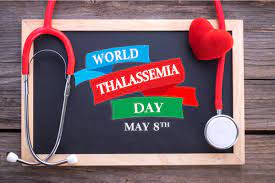
Every year, May 8th is celebrated as World Thalassemia Day.
- The theme for World Thalassemia Day 2022 is, “Be Aware. Share. Care: Working with the global community as one to improve Thalassemia knowledge”.
- The event was first organised by the Thalassemia International Federation (TIF) in 1994, in memory of George Englezos, the son of Thalassemia International Federation (TIF) founder, who lost his life to the Thalassemia. Since then, the day is observed every year on May 8th.
- World Thalassemia Day aims to create awareness about Thalassemia and support patients, their families and health care workers with information to combat it.
- Thalassemia is an inherited blood disorder passed to a child by either of the parents.
- Thalassemia causes defective red blood cell production leading to low haemoglobin and such patients require lifelong blood transfusion to cope with their lives.
- The defective red blood cells also cause a lot of problems, such as anaemia, shortness of breath, extreme fatigue, and irregular heartbeats.
- When there is not enough haemoglobin, the body’s red blood cells don’t function properly, which causes anaemia.
Direct Seeding Of Rice:

The Punjab government announced Rs 1,500 incentive per acre for farmers opting for Direct Seeding of Rice (DSR).
- Last year, 18% (5.62 lakh hectares) of the total rice area in the state was under DSR against the government target of bringing 10 lakh hectares under it.
- In 2021-22, 31.45 lakh hectares (over 3.1 million hectares) was under paddy and basmati, including 26.60 under non-basmati rice and 4.85 lakh hectares under basmati. The figure was 31.49 lakh hectares in 2020-21 and 31.42 lakh hectares in 2019-20.
- Around 3,600 litres to 4,125 litres of water is required to grow one kg rice depending upon the paddy variety.
- Therefore, the DSR technique is receiving a push from the government side as it is a water saving technique.
- DSR technique can help save 15% to 20% water. In some cases, water saving can reach 22% to 23%.
Direct Seeding of Rice (DSR):
- Here, the pre-germinated seeds are directly drilled into the field by a tractor-powered machine.
- There is no nursery preparation or transplantation involved in this method. Farmers have to only level their land and give one pre-sowing irrigation.
- In transplanting paddy, farmers prepare nurseries where the paddy seeds are first sown and raised into young plants.
- The nursery seed bed is 5-10% of the area to be transplanted.
- These seedlings are then uprooted and replanted 25-35 days later in the puddled field.
Martand Sun Temple:

A controversy has erupted over a puja ceremony attended by Jammu and Kashmir Lieutenant Governor Manoj Sinha at the premises of the Archaeological Survey of India (ASI)-protected Martand Sun temple in Anantnag, with the ASI claiming that it was in violation of rules.
- ASI argues that as per Ancient Monument Protection Act (ASI) rules, a prior permission was supposed to be sought.
- The eighth-century Martand Temple is one of the oldest sun temples in India and a symbol of invaluable ancient spiritual heritage.
- Built by Lalitaditya Muktapida in the 8th Century AD, the Martand Sun Temple is said to have been an excellent specimen of Kashmiri architecture and one of the holiest shrines for the Kashmiri Pandits.
- The temple was destroyed by Sikandar Shah Miri in the 14th Century AD and the ruins are now marked as a “site of national importance” by the Archaeological Survey of India.
PRAAPTI Portal:

According to the portal, total outstanding dues of electricity distribution companies to power producers rose by 4.04 per cent year-on-year to Rs 1,21,765 crore (Rs 1.21 trillion) in May 2022.
- DISCOMs owed a total of Rs 1,17,026 crore to power generation firms in May 2021.
- PRAAPTI stands for- Payment Ratification And Analysis in Power procurement for bringing Transparency in Invoicing of generators.
- The PRAAPTI portal was launched in May 2018 to bring transparency in power purchase transactions between generators and discoms.
What Is Operation Dudhi?

This operation was undertaken by the Assam Rifles while it was in Jammu & Kashmir from the years 1990 to 1992.
- A team of 15 soldiers gunned down 72 Pakistan-trained extremists.
- This remains the most successful counter-insurgency operation that has been conducted by any security force till date.
- The battalion had killed 72 militants and apprehended 13 others.
- The column of the Assam Rifles had moved from Battalion Headquarters that was located in Chowkibal for a routine patrol.
- The patrol was conducted to check the Dudhi post that was vacated due to winter.
- In the fierce firefight that took place till late night on the 5th and 6th May, soldiers Ram Kumar Arya and Kameshwer Prasad attained martyrdom.
- RK Yadav had sustained injuries during this mission.
- This operation was conducted on 3rd May 1991.
- This mission was undertaken by a column that comprised a Junior Commissioned Officer (JCO) along with 14 other ranks under Naib Subedar Padam Bahadur Chhetri’s command.
- The soldiers were only equipped with light machine guns as well as 7.62 mm self-loading rifles.
- The soldiers surrounded the enemy and then rained heavy fire at them.
Depreciation Of Indian Rupee : All-Time Low Of 77.44 Against The U.S. Dollar:
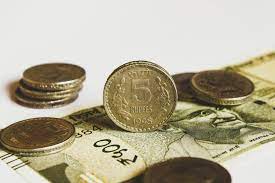
The Indian rupee fell to an all-time low of 77.44 against the U.S. Dollar.
Depreciation:
- Currency depreciation is a fall in the value of a currency in a floating exchange rate system.
- Rupee depreciation means that the rupee has become less valuable with respect to the dollar.
- It means that the rupee is now weaker than what it used to be earlier.
- For example: USD 1 used to equal to Rs. 70, now USD 1 is equal to Rs. 77, implying that the rupee has depreciated relative to the dollar i.e. it takes more rupees to purchase a dollar.
Impact of Depreciation of Indian Rupee:
Depreciation in rupee is a double-edged sword for the Reserve Bank of India.
Positive:
- Weaker rupee should theoretically give a boost to India’s exports, but in an environment of uncertainty and weak global demand, a fall in the external value of rupee may not translate into higher exports.
Negative:
- It poses risk of imported inflation, and may make it difficult for the central bank to maintain interest rates at a record low for longer.
- India meets more than two-thirds of its domestic oil requirements through imports.
- India is also one of the top importers of edible oils. A weaker currency will further escalate imported edible oil prices and lead to a higher food inflation.
Reasons for Current Depreciation of Indian Rupee:
- A sell-off in the global equity markets which was triggered by the hike in interest rates by the U.S. Federal Reserve (central bank), the war in Europe and growth concerns in China due to the Covid-19 surge, led to the rupee depreciation.
- The outflow of dollars is a result of high crude prices and the correction in equity markets is also causing adverse flow of dollars.
- Steps taken by RBI to tighten the monetary policy to counter rising inflation has also led to depreciation.
National Physical Literacy Mission:
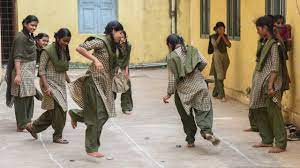
The Supreme Court has asked the Centre and States to respond to a report recommending sports to be expressly made a fundamental right under Article 21 of the Constitution.
- Further, the report submitted by the court’s amicus curiae (friend of the court) suggested that the “narrow” phrase ‘sport’ be replaced by ‘physical literacy’, which is a term “firmly established as a right in the leading sporting nations of the world”.
- The report was filed in a Public Interest Litigation (PIL) to amend the Constitution to make sports a fundamental right and amend the Directive Principles of State Policy to include an obligation to “strive for promotion of sports education”.
- It had urged that sports should be transferred to the Concurrent List to facilitate cooperative work between the Centre and states (at present, sports is a state subject).
What Is Ethanol Blending?
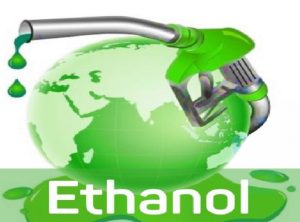
The level of ethanol blending in petrol in India has reached 9.99%.
- Ethanol is one of the principal biofuels, which is naturally produced by the fermentation of sugars by yeasts or via petrochemical processes such as ethylene hydration.
- Ethanol Blending Programme (EBP) is aimed at reducing the country’s dependence on crude oil imports, cutting carbon emissions and boosting farmers’ incomes.
- The Government of India has advanced the target for 20% ethanol blending in petrol (also called E20) to 2025 from 2030.
- By blending ethanol into gasoline, it can reduce the amount of petrol required to run a car, thereby reducing dependence on imported, expensive, and polluting petroleum.
- Today, India imports 85% of its oil requirements.
- India’s net import of petroleum was 185 million tonnes in 2020-21 at a cost of USD551 billion.
- Most of the petroleum products are used in transportation and therefore, the E20 programme can save the countryUSD4 billion annually.
- Ethanol is a less polluting fuel and offers equivalent efficiency at a lower cost than petrol.
- Availability of large arable land, rising production of foodgrains and sugarcane leading to surpluses, availability of technology to produce ethanol from plant-based sources, and the feasibility of making vehicles compliant to ethanol blended petrol (EBP) are some of the supporting arguments used in the roadmap for E20, which refers to the target as “not only a national imperative, but also an important strategic requirement”.
Low Wheat Procurement:
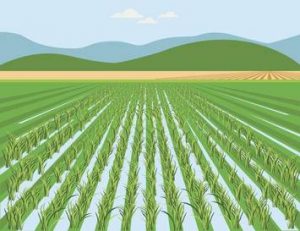
Wheat procurement by government agencies is set to dip to a 15-year low in the current marketing season, from an all-time high scale last year.
- Likely procurement this time: The 18.5 million tonnes (mt).
- This would be the first time that wheat procured from the new crop (18.5 mt) is less than the public stocks at the start of the marketing season (19 mt).
- This is also a 15-year-low. This is the lowest since the 11.1 mt bought in 2007-08.
Reason:
- Rise in export demand: Mainly fuelled by Russia – Ukraine war.
- The war has led to skyrocketing prices and a further increase in demand for Indian grain. Farmers find it more profitable to export now.
- Lower production: The sudden spike in temperatures from the second half of March — when the crop was in the grain-filling stage, with the kernels still accumulating starch, protein and other dry matter — has taken a toll on yields.
Impact :
- This would affect the minimum operational stock-cum-strategic reserve of government agencies.
- This would also affect the public distribution system, midday meals and other regular welfare schemes.
- Farmers will certainly benefit from the scenario as they are being offered a price above the MSP. Amid the Russia-Ukraine crisis, new markets in countries like Israel, Egypt, Tanzania and Mozambique have opened up for India.
- However, on the other hand, if private traders continue to buy above MSP, eventually that could stoke inflation.




